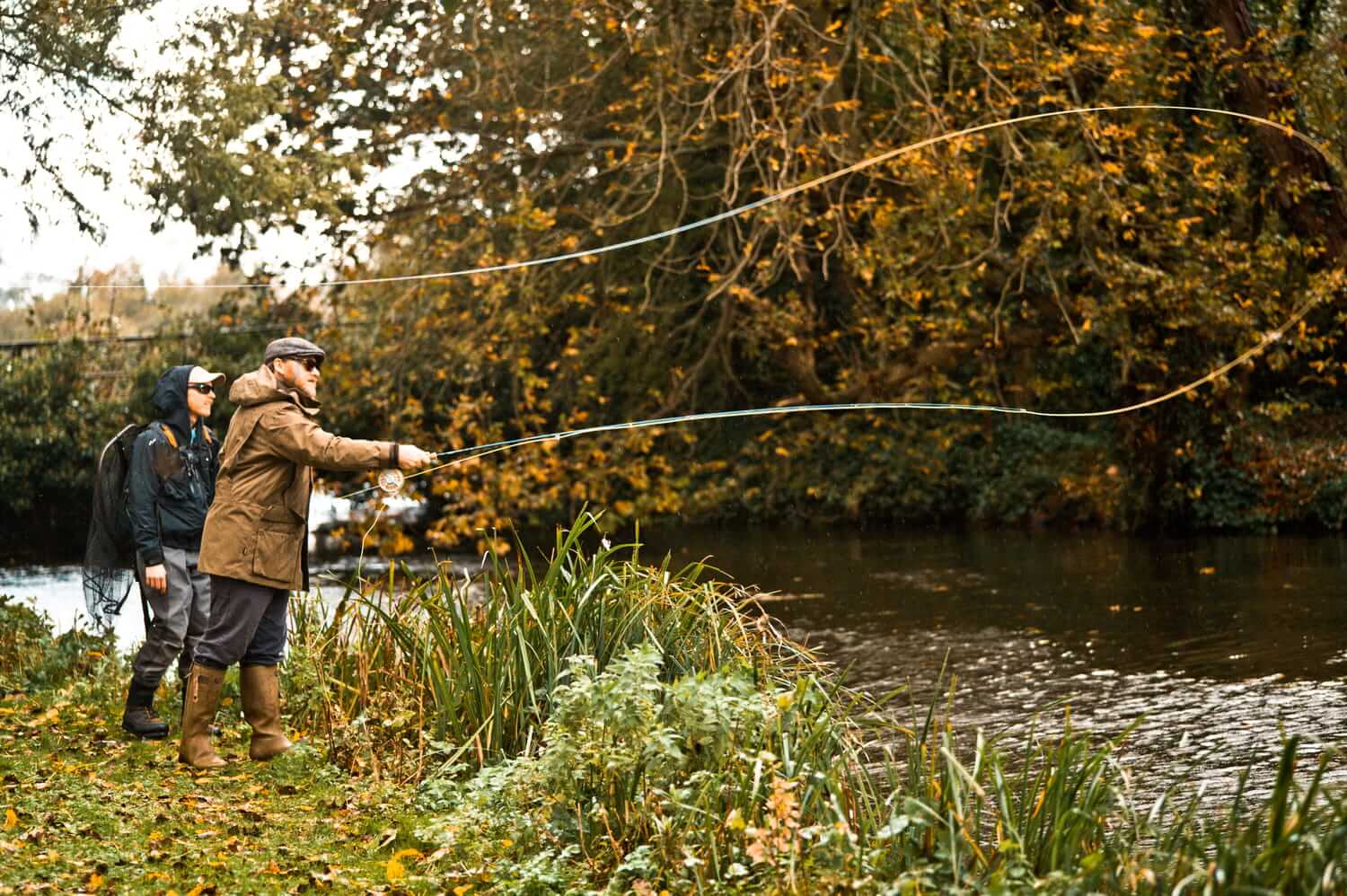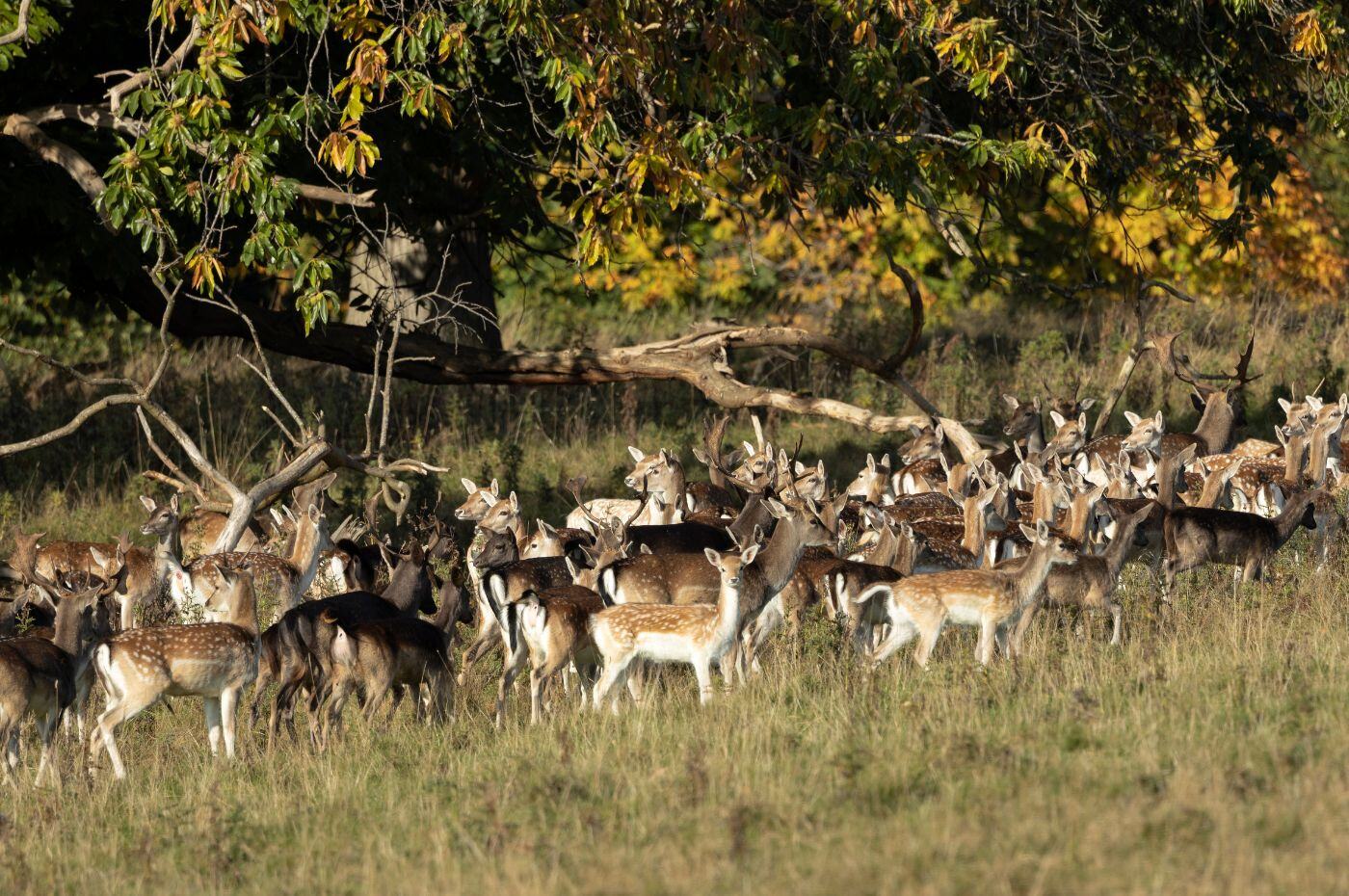Making a difference: 10 years of the Country Food Trust
By turning surplus game into ready-to-eat meals the Country Food Trust is...
View Details
From the Winter 2021 issue of My Countryside magazine, Sam Carlisle fishes for pike - the tyrant of fresh waters.
Photos by Mark Fairhurst and Alex Jardine
A ferocious pair of eyes, acute and observant, survey the watery world of the river bed. A flat, almost prehistoric, forehead intersects with a jaw that can open improbably wide, swallowing prey whole. The mouth is lined with up to 700 teeth, all of which face backwards, skewering any half eaten fish that tries to make one last bid for freedom. This is the anatomy of a killer. It is a fish the venerable bard of angling, Izaak Walton, described in 1657 as "the tyrant of fresh waters". And when you look at esox lucius, the pike, this reputation makes perfect sense. Their flanks, a mottled yellow and green, blend perfectly with aquatic weeds. They lie, motionless, waiting for an unsuspecting delicacy to glide past. Then, with the lightning strike of a cobra, they attack.
I am on banks of the most revered chalk stream, the River Test, birthplace to the genteel sport of dry fly fishing. But I am not in pursuit of lofty trout. I am fly fishing for the tyrant. That I should want to catch pike at all, especially in such hallowed waters, is anathema to traditionalists. Historically, pike have been persecuted by river keepers, who were concerned that they predated the more valuable trout and salmon. In 1904 the keepers at the Houghton Club, perhaps the most famous stretch of trout water anywhere in the world, only a few miles downstream of where I am standing, killed 635 pike. "Even a couple of years ago, they were killing 50 pike a year on this beat," mentions Alex Jardine, pike fly fishing enthusiast and my guide for today.
Fortunately, for both pike, sport fishermen and the health of the rivers themselves, attitudes have started to change. "Small pike, say under 7lb, are known as Jacks." Alex continues. "They like to eat all the time. They are serious opportunists and will rarely turn down the chance of a meal. As they grow though, they get more wary. A large pike might only eat one meal per week, conserving its energy and hunting wisely." Removing lots of pike, inevitably including the largest specimens, doesn't actually decrease predation on trout and salmon – it increases it. The vacuum is filled by numerous Jack pike, when it could have been the territory of a single, larger and less voracious adult fish. This has been known to the scientific community for some time but has only really held truck with river managers since pike have become an attractive fish for anglers, who will now pay to target them throughout the trout off season. Like so many conservation stories, the theory only moves into practice when there is enough of a financial incentive to change the status quo.
It is autumn, and although pike can be fished for throughout the summer, this is the real start of the season. "As the temperatures drop, the bait fish – roach, young trout, and on this beat in particular, grayling – tend to school up. Where there are bait fish, there will be pike. They're slightly easier to find at this time of year," Alex explains. A chalk stream is a particularly special place to fish for pike. The clarity of the water means you can often spot them, camouflaged between waving strands of ribbon weed, waiting for the next meal. Our beat for today is Testcombe, just upstream from Stockbridge. It epitomises the chalk stream idyll; exactly the sort of spot you'd like to spend an evening in May casting to rising trout with delicate tackle. On an island between the main river and a smaller carrier stream, there is a fishing hut, built in 1888 and surely one of the most delightful in England. Benjamin Disraeli used to live here, and this was his tennis pavilion, the grass court once nestled between the flowing waters. The tackle though is a far cry from the delicate imitations of mayflies of caddis that trout like to take. There are big fish here and they want a substantial meal. Alex carries hundreds of options in zip-loc bags; a conventional fly box is far too small. "This one imitates a wounded roach, and swims slightly lop-sided through the water," he says, holding up a fly almost the length of my forearm. We tie one on, white with a few red feathers around the head, and walk upstream.
The flies are not the only difference in tackle. The rod is more 'stiff stick' than 'gentle wand', designed primarily for fishing amongst the Caribbean mangroves, chasing powerful saltwater fish. You need a rod with backbone to cast such large flies, which despite recent developments in materials, are not aero-dynamic. The correct leader set up is also essential. "You can buy pre-made leaders specially for pike fishing, which are excellent. But if you do it enough, it makes sense to make your own." I cast my eye down Alex's homemade version: 40lb mono for most of it, tied to one and a half feet of 130lb mono, known as a 'bite tippet', and then a clip that the fly swivels on to. The heavy mono is thick enough not to be cut by the pike's razor teeth, and while many people use wire instead, Alex feels that in the clear water of a chalk stream the mono is preferable.
As we make our way upstream, Alex points out the areas that pike like to lay in wait.Typically, under the ledges of weed or structure, half hidden, and exactly the sort of place a smaller fish might seek out sanctuary. I pepper each spot with half a dozen casts, jerkily stripping the line back to make my fly swim like an injured grayling. Alex guides through the summer on this beat, when brown trout are the focus. He has noted where the resident pike live, and we hop from place to place. By noon I have yet to lure one from the depths. At the very top of the beat, where a carrier and the main river merge into one, there is a gravel bank, with reeds growing from it. I cast in between the reeds. As my fly leaves the shallow water of the gravel bar and swings over a deeper spot, there is an almighty eruption. Water splashes across the river, there is a flash of a pike's glistening flank, and for a brief moment I see its gaping mouth fully engulf the eight-inch fly. It happens so quickly, so violently and so unexpectedly, that I jump in shock and instinctively raise the rod to set the hook. After a brief moment of tension, the line is slack and no fish is connected. "Sam! We've spoken about this. Don't strike like you would for a trout!" I drop the rod on the bank and turn from the river, muttering curses and embarrassed at my ineptitude. Pike fishing 101 is not to raise the rod as you might when a trout takes the fly. You need to pull the line tight, known as a 'strip strike', which embeds the hook into the toothy mouth. Simply lifting the rod is not powerful enough for the point to find purchase. I've blown my chance.
In the afternoon the sun shrinks behind some clouds and Alex is confident that conditions are improving. We explore some new spots downstream, then arrive at the scene of my earlier failure, where a large pike spots us and disappears, kicking up a cloud of silt behind him. Another chance blown. Dispirited, I cast again amongst the reeds. In exactly the same spot, about halfway across the river, there is another explosion. This time I hold fast, pointing the rod at the fish and stripping hard. The line is tight, and then suddenly it is slipping through my fingers at an alarming rate, with a disgruntled pike attached to the other end. The fish leaps clear of the water, splashing its tail across the surface and adding to the sense of mayhem. Pike do not battle quite as hard as some fish, but the savagery of their take and their acrobatic jumps more than make up for it. With a few more leaps, Alex is able to nudge through the rushes that line the bank and slide a net under the prize: a 10lb 'tyrant of fresh waters'. Easing the barbless hook out of its mouth, I admire the ancient form that makes pike such effective predators. I hold it briefly in the current, before it waves its tail and vanishes back into the stream. I am thankful that attitudes have changed and this marvellous fish will live to hunt another day.

By turning surplus game into ready-to-eat meals the Country Food Trust is...
View Details
With tens of thousands of crimes committed on church property in recent years,...
View Details
With Labour under pressure to act on its pledge to ban trail hunting, the...
View DetailsThis exclusive resource is specially curated for those who share our passion for the countryside. As a member of the Countryside Alliance, you already have access. Not a member yet? Unlock this content by entering your details below to gain access to exclusive resources. Want to join a community of like-minded individuals. Explore our full range of membership options and benefits at the Countryside Alliance.